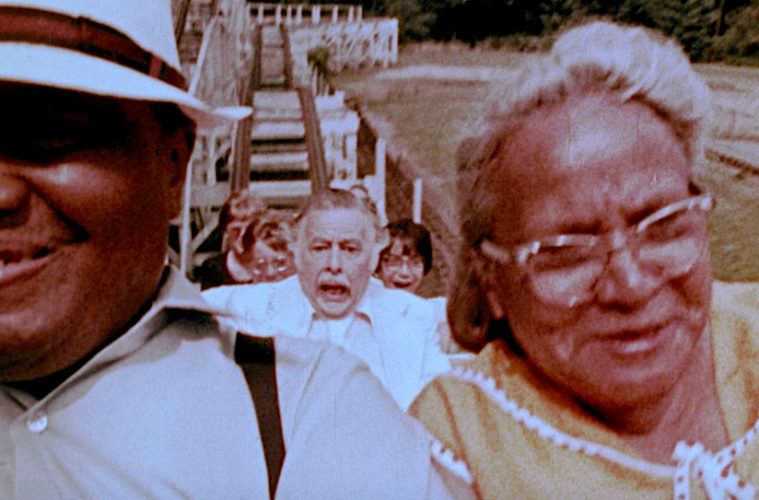 George A. Romero’s The Amusement Park may be the most viscerally effective educational film ever made. Shot on a shoestring budget in three days in the early 1970s, it looks like the kind of film you’d watch in junior high while your science teacher takes a cigarette break, but its cheapness belies a sophistication that marks it as the work of a genuine artist.
George A. Romero’s The Amusement Park may be the most viscerally effective educational film ever made. Shot on a shoestring budget in three days in the early 1970s, it looks like the kind of film you’d watch in junior high while your science teacher takes a cigarette break, but its cheapness belies a sophistication that marks it as the work of a genuine artist.
Purportedly shelved because it proved too disturbing for its intended use—to inspire sympathy and charitable action on behalf of the elderly—this 52-minute curiosity has been lovingly restored by IndieCollect from its surviving 16mm elements, and makes its streaming debut on Shudder TV on June 8, nearly 40 years after its completion.
The film opens with its lead actor, Lincoln Maazel, directly addressing the audience, explaining the purpose of the film: “You’ve seen news reports and documentary material dealing with the plight of the elderly,” he says. “We will not repeat what you have heard.”
The camera then relocates to a brightly lit, Twilight Zone-esque “waiting room” in which Maazel, now bruised and bloodied, sits in a state of despondency. He is visited by a mirror image of himself, this one tidy and cheerful. The first man warns his double not to leave the room. “There’s nothing out there,” he moans. Refusing to heed this advice, the second man exits to the amusement park, where he sustains a series of surreal encounters.
The park, of course, isn’t a literal pleasure fair but a metaphorical hellscape in which droves of old folks are fleeced, herded onto rollercoasters, and squeezed into bumper cars. There is no plot or character development to speak of; the narrative consists of a succession of vignettes structured thematically around society’s mistreatment of old people. The director himself turns up in a cameo as a dodgem driver who browbeats a married couple after causing an accident.
One scene in an outdoor restaurant is pantomimed in the style of a silent movie comedy sketch. Another finds a fortune teller predicting the future of a young, chipper couple. (It doesn’t end well.). At one point, Maazel is harassed by some Hell’s Angels, a foretaste of the nihilistic bikers in Dawn of the Dead.
The Amusement Park isn’t about the fear of growing old so much as the fear of being old, and existing in a materialistic society that treats its senior citizens like objects to be exploited. Romero, whose skill as a social critic was already finely tuned when he debuted the groundbreaking Night of the Living Dead in 1968, proves himself an equal opportunist when it comes to condemning the dysfunctions of American society. In a grimly funny moment, the protagonist seeks refuge in a church, only to have the doors shut while the clergy take a smoke break. The bleached, coarse-grained surface image and tight editing enhance the immediacy of these episodes.
The film was sponsored by the Lutheran Service Society of Western Pennsylvania and shot locally in West View Park, an institution no longer in existence. This unlikely marriage between mainline Christians and a budding horror auteur produces a work of fascinating artistic tensions—you can almost feel Romero’s temperament running up against the limits of the assignment he’s been handed while simultaneously treating the message with the utmost seriousness.
If The Amusement Park doesn’t motivate you to be kinder toward old people, then you may already be dead. Although the abrupt epilogue blunts the impact of the preceding sequences, the film concludes with a suitably desolate image of existential dread: the empty fairgrounds accompanied by thunderclaps that seem to herald the bitter reality of age and obsolescence that inevitably catches up with us all.
See you in The Park.
Advertising disclosure: We may receive compensation for some of the links in our stories. Thank you for supporting LA Weekly and our advertisers.

